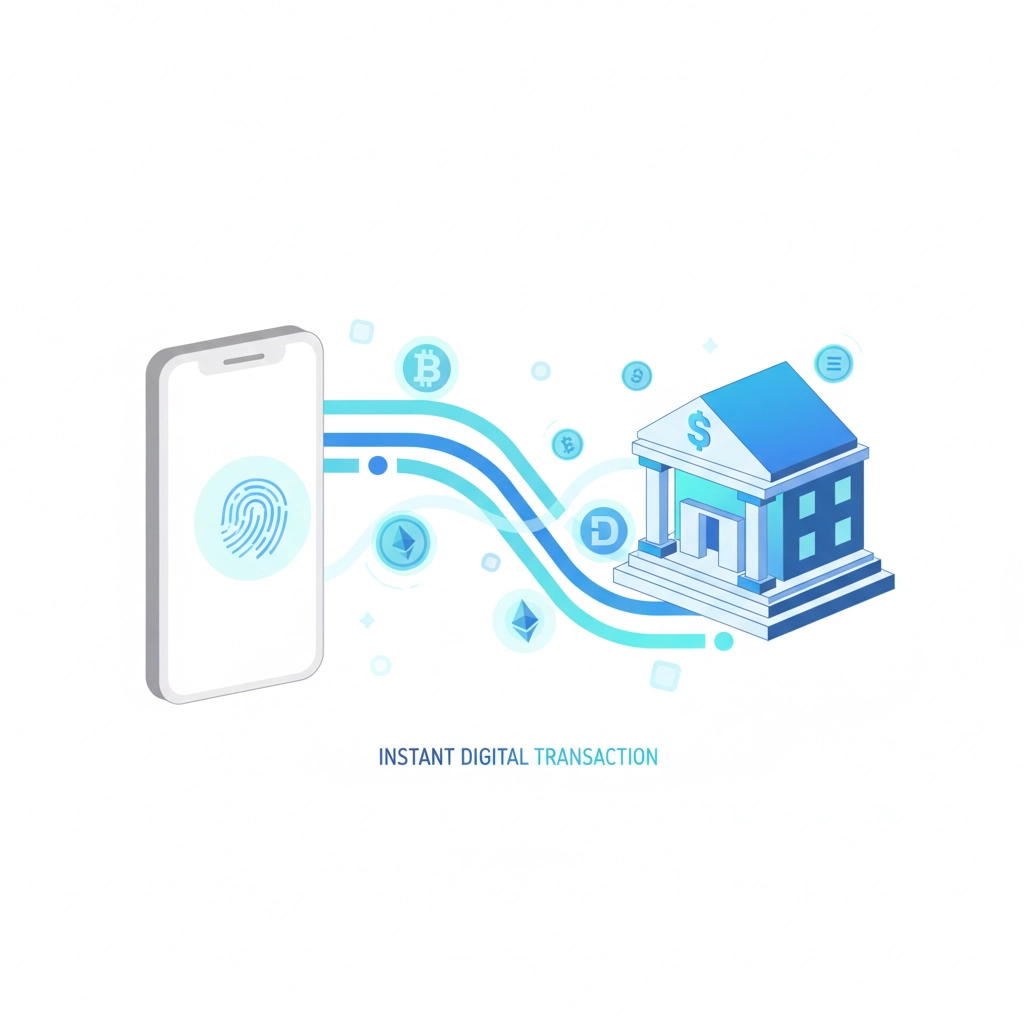Visa Direct Releases New Stablecoin Capabilities for Faster Business Funding
- Kian Jackson

- Oct 3
- 5 min read

The cross-border payments landscape just shifted dramatically. On September 30, 2025, Visa Direct unveiled a game-changing stablecoin pilot program at SIBOS that's set to revolutionise how businesses handle international funding and transfers.
For fintech leaders and PSPs who've been watching the stablecoin space mature, this isn't just another blockchain experiment: it's Visa bringing institutional-grade stablecoin infrastructure to mainstream business payments.
What Visa Direct's New Stablecoin Features Actually Do
Here's the deal: Visa Direct now allows businesses to prefund their accounts with stablecoins like USDC and EURC instead of traditional fiat currency. The platform treats these digital assets as "money in the bank": immediately available cash equivalents that can trigger instant payouts.
The technical implementation is elegant in its simplicity. Financial institutions fund their Visa Direct accounts with stablecoins, which Visa's system recognises as available balance. When a cross-border payment is initiated, the settlement happens in minutes rather than the traditional 2-5 day window we've all grown frustrated with.

What's particularly clever is that recipients still receive payments in their local currency. There's no disruption to the end-user experience: the blockchain efficiency happens entirely in the backend treasury operations.
The Speed Revolution: From Days to Minutes
Traditional cross-border business funding has been stuck in the stone age. Companies typically need to:
Lock up large fiat balances in advance across multiple currencies
Wait 2-5 days for international wire transfers to settle
Deal with unpredictable settlement windows that mess with cash flow planning
Pay hefty fees for expedited processing
Visa's stablecoin integration flips this model completely. Businesses can now complete cross-border transfers in minutes while freeing up the working capital that was previously tied up in prefunding accounts.
For context, let's say you're a fintech serving SMEs with international supplier payments. Previously, you'd need to maintain substantial USD, EUR, and GBP balances to ensure same-day processing. Now, you can hold USDC and convert on-demand, dramatically improving your capital efficiency.
Strategic Partnerships Signal Serious Intent
Visa isn't just testing this in a sandbox. They've already locked in substantial partnerships that show the commercial viability:
Yellow Card Financial is implementing stablecoin-powered treasury solutions across 20 African countries through this program. Given Africa's mobile money dominance and cross-border remittance volumes, this partnership alone could process billions in transaction volume.
BBVA, Spain's second-largest bank, is using Visa's Tokenised Asset Platform to issue an Ethereum-based stablecoin. When a traditional banking giant like BBVA commits to blockchain-based treasury operations, it signals mainstream institutional adoption.

These aren't pilot partnerships: they're production deployments with serious commercial backing.
What This Means for Cross-Border B2B Payments
The implications for B2B cross-border payments are massive. We're looking at three fundamental shifts:
Treasury Optimisation: Businesses can now hold a single stablecoin reserve instead of maintaining multiple fiat currency accounts. This simplifies treasury operations and reduces the capital requirements for international operations.
Predictable Settlement: The blockchain settlement layer removes the uncertainty around when funds will be available. No more wondering if that supplier payment will clear on Friday afternoon or get stuck until Monday.
Reduced Counterparty Risk: Stablecoins settled on public blockchains provide transparent, immutable transaction records. This reduces disputes and provides clear audit trails for compliance teams.
The broader trend here is that traditional correspondent banking relationships are becoming less critical. Instead of routing payments through multiple intermediary banks (each taking fees and time), businesses can leverage Visa's direct stablecoin rails.
Implications for Fintech Leaders and PSPs
If you're running a fintech or PSP, this development changes your competitive landscape in several ways:
Cost Structure Advantages: Fintechs that integrate stablecoin treasury operations can offer faster, cheaper cross-border services than competitors stuck with traditional banking rails. The cost savings from reduced prefunding requirements can be passed to customers or reinvested in growth.
Product Differentiation: Real-time cross-border settlements become a genuine differentiator. While competitors promise "fast" international transfers, you can deliver guaranteed minute-level settlement.
Capital Efficiency: The reduced prefunding requirements mean you can scale international services without proportionally scaling your balance sheet. This is particularly valuable for venture-backed fintechs managing cash runway.

Regulatory Positioning: Early adoption of Visa's compliant stablecoin framework positions you well for upcoming regulations like the U.S. GENIUS Act and similar frameworks in other jurisdictions.
Practical Implementation Examples
Here are three real-world scenarios where this technology creates immediate value:
E-commerce Marketplace Payouts: A marketplace serving global sellers can now guarantee vendor payments within minutes of customer checkout, regardless of the seller's location. Previously, international sellers waited days for payment settlement.
Supply Chain Finance: Manufacturing companies can automate supplier payments triggered by shipment confirmations or delivery receipts. The instant settlement enables just-in-time payment terms that improve supplier relationships.
Freelancer Payments: Platforms serving global remote workers can offer same-day payment guarantees. This is particularly powerful in emerging markets where traditional banking access is limited but mobile money adoption is high.
The 2026 Expansion Timeline
Visa's pilot currently operates with select partners meeting specific compliance criteria. The expansion roadmap for 2026 suggests broader availability as regulatory frameworks mature.
Key markets to watch include:
Hong Kong (where stablecoin licensing frameworks are already established)
Singapore (building on their existing digital asset regulations)
EU markets (leveraging MiCA compliance)
Additional African markets (expanding beyond the current Yellow Card partnership)

The expansion timeline aligns with anticipated regulatory clarity in major markets, suggesting Visa is positioning for rapid scale once compliance frameworks are established.
Technical Infrastructure Requirements
For fintechs considering integration, the technical requirements appear straightforward. Visa's existing Direct API infrastructure handles the stablecoin conversion and settlement, so integration complexity is minimal for existing Visa Direct partners.
New entrants will need to meet Visa's standard compliance requirements plus additional cryptocurrency-specific criteria around:
AML/KYC procedures for digital asset transactions
Stablecoin custody and security protocols
Blockchain transaction monitoring capabilities
The beauty of Visa's approach is that they're handling the complex blockchain infrastructure while exposing simple API endpoints to partners.
Strategic Considerations for Fintech Leaders
This development represents more than a new payment method: it's a fundamental shift toward blockchain-based financial infrastructure. Fintech leaders should consider:
Partnership Strategy: Early integration with Visa's stablecoin capabilities could provide significant competitive advantages before the 2026 broader rollout.
Treasury Management: Review your current cross-border treasury operations to identify immediate cost savings and capital efficiency gains.
Product Roadmap: Consider how minute-level cross-border settlements enable new product features or service guarantees.
Regulatory Preparation: Ensure your compliance framework can handle stablecoin transactions as this technology scales.
The fintech industry has been waiting for institutional-grade stablecoin infrastructure that bridges traditional finance with blockchain efficiency. Visa Direct's new capabilities represent exactly that bridge.
For fintech leaders and PSPs ready to leverage these capabilities, the opportunity is significant. Early adopters will benefit from reduced operational costs, improved customer experiences, and competitive differentiation in an increasingly crowded market.
Ready to explore how these developments could transform your cross-border payment operations? Our team at Kian Jackson specialises in helping fintechs navigate emerging payment technologies and regulatory frameworks. Get in touch to discuss your strategic implementation approach.

Comments